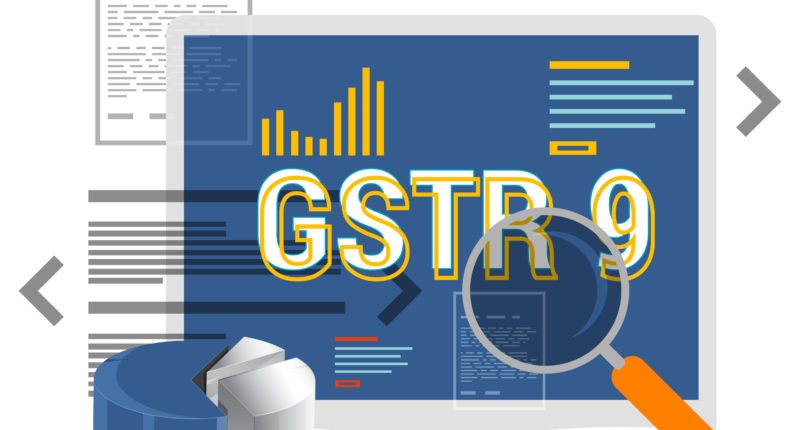We are nearing another crucial deadline under the Goods and Services Tax (GST), i.e., the filing of annual returns in form GSTR-9 and reconciliation statement in form GSTR-9C for FY 2019-20. As per the current update, 28th February 2021 is the last date for filing these forms without any late fee.
Several industry representatives and tax professionals have expressed concerns about filing these forms. Further, many trade associations have written to the government seeking yet another deadline extension. Simultaneously, few others have requested the late fee waiver instead of a due date extension to avoid other legal repercussions.
The GSTR-9 filing for FY 2019-20 is compulsory for registered businesses with a total annual turnover of more than Rs.2 crore in the financial year 2018-19. Likewise, GSTR-9C submission and GST audit become mandatory where the annual turnover exceeds Rs.5 crore in the FY 2018-19. The rest of the taxpayers to whom GSTR-9 is optional may still file the return since it allows a yearly check for any mismatches between GSTR-1 and GSTR-3B during FY 2019-20 and reporting, avoiding any potential notices from the GST department.
Following are the important do’s and don’ts while preparing and filing GSTR-9, specifically for FY 2019-20:
- It is compulsory to file a GSTR-9 even when there are no sales, purchases, tax liability, input tax credit claims, refund receipts and any demand orders issued during FY 2019-20. In such cases, make sure to file a nil return on the GST portal through OTP verification.
- While preparing the GSTR-9 return, download and save the PDF version of the system computed GSTR-9 summary from the GST portal for any reference. Similar information is also available for a full-year summary of GSTR-1, GSTR-3B and Table 8 (A) containing input tax credit appearing in GSTR-2A for FY 2019-20, generated on 1st November 2020.
- Ensure that all the GSTR-1 returns and the GSTR-3B returns from 1st April 2019 to 31st March 2020 must have been filed. Note that it must not be in the ‘submitted’ status.
- Reporting information in Tables 4 (I), (J), (K) and (L) of GSTR-9 continues to be optional for FY 2019-20. These fields cover the reporting of the credit notes and the debit notes issued during FY 2019-20. Further, it covers both addition and reduction in supplies or tax declared through amendments in GSTR-1 during FY 2019-20. Note that all these amounts can instead be adjusted directly to Tables 4 (A) or Tables 4 (B) to (E) of the GSTR-9, for B2C and B2B sales, respectively.
- Regarding the reporting of exempted supplies during FY 2019-20, there is no need to further bifurcate this as nil-rated and non-GST for Tables 5 (E) and (F) of GSTR-9. A cumulative figure can be entered in Table 5 (D) as exempted.
- Under Tables 4 and 5 of GSTR-9, do not report those sales of FY 2019-20 declared on or after 1st April 2020 but before the due date of filing GSTR-3B of September 2020. Those details will come in Table 10 and 11, depending on whether it was an increment or decrement.
- Furthermore, for Table 6, there is an important change reintroduced for FY 2019-20. The relaxation to club input tax credit availed on inputs, capital goods and input services as inputs will no longer apply from FY 2019-20 onwards. Input services may be clubbed along with inputs. However, report the input tax credit on capital goods separately. The taxpayers may face hassles in reporting if proper ledgers are not maintained for this in books of accounts.
- Suppose any sales or input tax credit of FY 2018-19 was reported during FY 2019-20. In that case, such amounts must be reduced if auto-populated in Tables 4, 5, 6 and 7 of GSTR-9. As per a CBIC circular, it has been clarified that suppose one is claiming tax credit during FY 2019-20 but which belongs to next year, it need not be reported in Table 6 but will go to Table 13.
- Next up, Table 7 of GSTR-9 requires reporting of any input tax credit reversed during FY 2019-20, classified into each of the relevant CGST Rules. The requirement to report rule-wise, such as tax credit reversal under Rules 37, 39, 42, and 43, including blocked credits under Section 17(5) of the CGST Act, was optional until FY 2018-19. This relief applies to even FY 2019-20. Instead, report it as a single total amount of reversal in Table 7 (H1) called ‘Other reversals’.
- Do match the input tax credit auto-populated into Table 8 (A) with purchases as reported in your income tax return to avoid inconsistencies.
- Table 8 (C) of GSTR-9 requires the reporting of input tax credit received in FY 2019-20 but availed between 1st April 2020 and the due date of filing GSTR-3B of September 2020 (31st October 2020). So, suppose you have any reversals of the input tax credit belonging to FY 2019-20 but carried out from 1st April 2020 and the due date of filing GSTR-3B of September 2020. In that case, it must be reported in Table 12 of GSTR-9.
- Pay any additional unpaid liability in form DRC-03 after matching auto-populated tax liability in Table 9 of GSTR-9 with your records. Note that this payment can be made even after filing GSTR-9.
- Reporting in Tables 12 and 13 is optional as per Central Tax Notification 79/2020. Likewise, Tables 15 for reporting demands and 16 for reporting purchases from composition taxpayers and supplies on an approval basis are optional.
- Tables 17 and 18 for HSN-wise summary of sales and purchases continue to be optional for FY 2019-20.
- Report the values only up to two decimal places in the GSTR-9 if you use the offline utility. The clarification came in on 22nd February 2021 from the GST Network due to a popular error that taxpayers have faced. The error is known as “Error! Invalid Summary payload”. It crops up after uploading the JSON file created from the offline utility due to entering values up to three decimal places.
Following are vital do’s and don’ts while preparing and filing GSTR-9C, specifically for FY 2019-20:
- Tables 5 (B) to 5 (N) of GSTR-9C to capture the turnover details are optional. The auditor may fill a single cumulative figure only in Table 5 (O).
- Two tables are now optional: Tables 12 (B), i.e., the input tax credit of last year availed in FY 2019-20 and 12 (C) that contains input tax credit of FY 2019-20 that is to be availed next year.
- Table 14 for filing up the expense-wise claim of input tax credit continues to be optional for FY 2019-20.
- As per an advisory by the GST Network dated 22nd February 2021, clarification was given on the GST rate-wise declaration of transactions for FY 2019-20. The tax amount against rates such as 1%, 1.5% and 7.5% in Tables 9, 11 and Section V of GSTR-9C may be declared a single cumulative amount or under a field called ‘Others’ of the Tables.
Some taxpayers and professionals are currently finalising returns in full swing without risking any last-minute inadvertencies due to no extension being announced. It is pertinent to note that the GSTR-9 and GSTR-9C, once filed, cannot be revised and, therefore, must be accurate. That may call for unnecessary hassles of writing separately to the jurisdictional officer and time-consuming follow-ups.
Annapoorna, popularly known as Anna, is an aspiring Chartered Accountant with a flair for GST. She spends most of her day Singing hymns to the tune of jee-es-tee! Well, not most of her day, just now and then.





